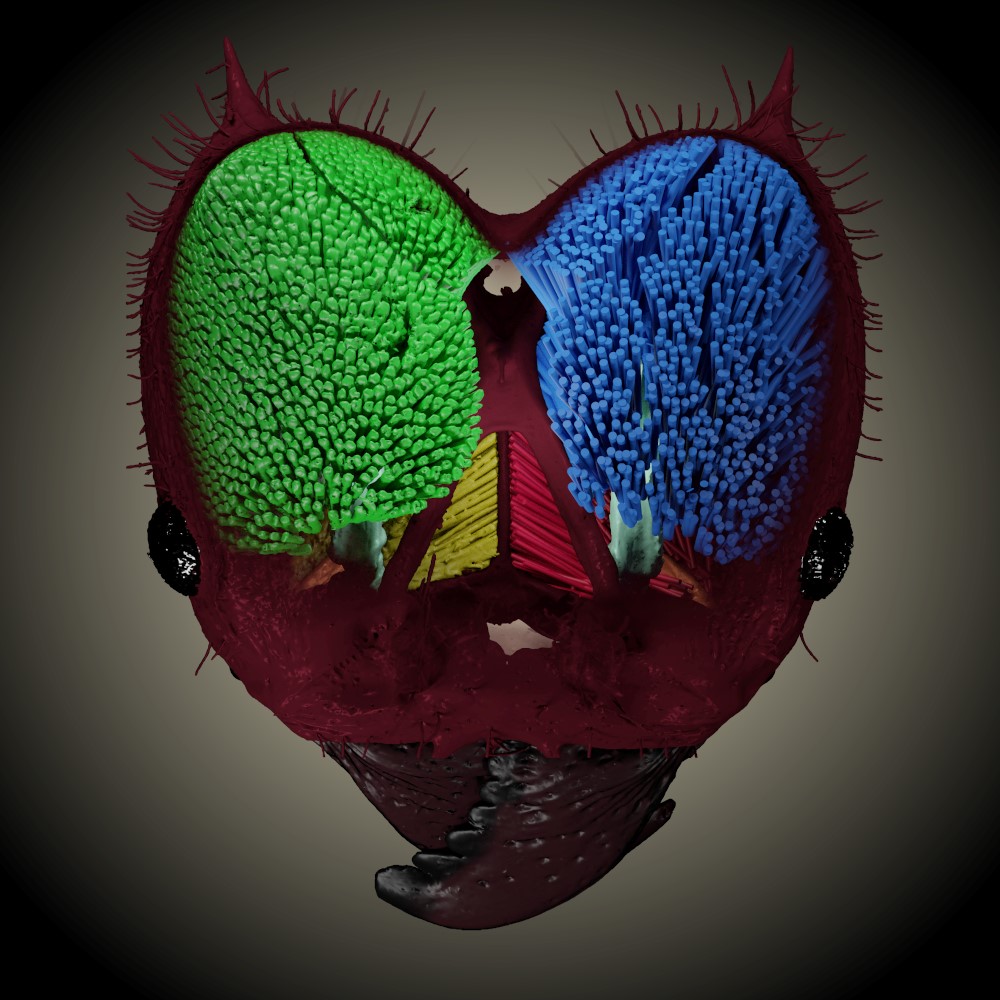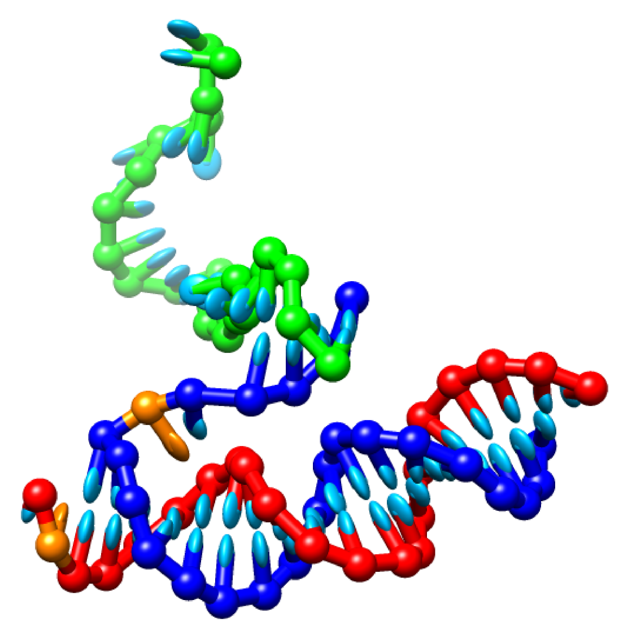The Evolutionary Biomechanics Laboratory – Dr David Labonte

The Evolutionary Biomechanics Laboratory studies how physical constraints influence the performance, behaviour, and evolution of animals. A particular current focus of the group are the biomechanics of plant-feeding in insects - what are the mechanical adaptations that enable insects to forage and feed efficiently on plants, and what are the mechanical strategies plants can use to defend themselves? The image below shows a computed tomography scan of the head of a leaf-cutter ant worker (false colours). The head is almost completely filled with muscle (green and blue); as a result, leaf-cutter ants produce the highest size-specific bite forces recorded for any animal. This extreme specialisation is biologically necessary, for leaf-cutter ants are small animals that forage on tough plant leaves. Without it, they would be unable to cut the leaves. To understand this specialisation in more mechanical detail, we developed algorithms that allow us to reconstruct the original muscle tissue (green) digitally (blue), so providing detailed quantitative information about muscle 3D architecture.
OxDNA model – Dr Thomas Ouldridge

The DNA (deoxyribonucleic acid) molecule is central to life, providing the basis for inheritance and the blueprint for building cells. More recently, DNA has been repurposed as a building block for the construction of synthetic molecular systems - a field known as DNA nanotechnology. The structure, mechanical properties and stability of DNA are central to both its biological and nanotechnological roles, and the interplay of these properties gives rise to complicated behaviour.
Dr Thomas Ouldridge and his collaborators developed the OxDNA model of DNA to allow researchers to explore DNA behaviour in a range of settings. The model represents DNA as nucleotide bases undergoing interactions that drive key behaviour, and has seen widespread applications in both biologically-inspired and nanotechnological applications. The basic model was first introduced in 2010, but Dr Ouldridge and his collaborators have continued to refine it, helping the user base to grow further - as of 2022, over 200 papers had been published using oxDNA. Dr Ouldridge's group themselves are currently using the oxDNA model to guide development of synthetic DNA-based information processing systems.